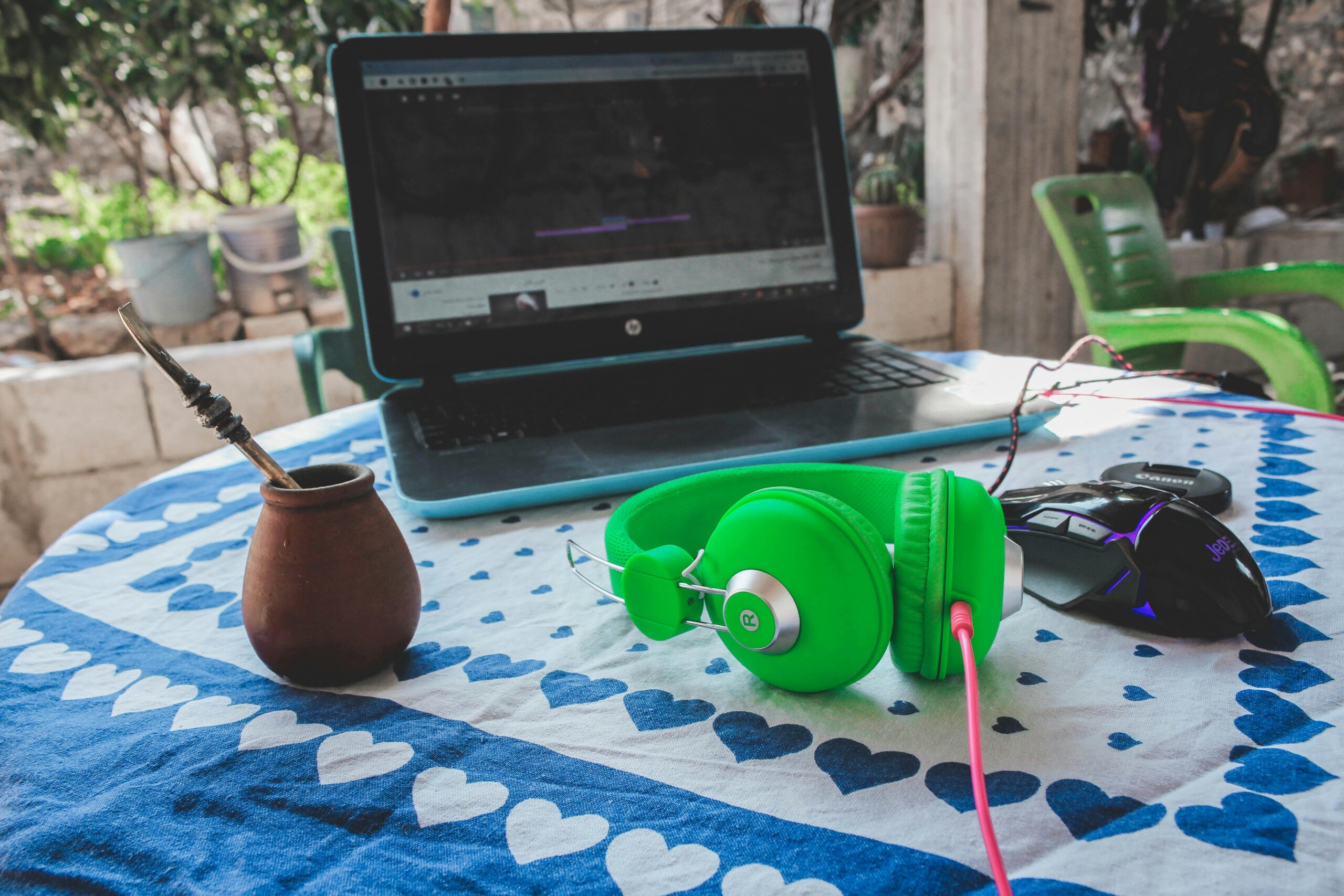Okay, so you’re probably here because you’ve heard about this whole YouTube To MP3 320kbps Converter thing and wondering, “What’s the big deal with 320kbps anyway?” Honestly, same here. I mean, we all know ripping audio from YouTube is old news, but what if I told you there’s a sneaky way to actually unlock ultimate audio quality—like, the kind that makes your playlists sound way better than your usual downloads? Sounds too good to be true, right? Well, maybe it’s just me, but I’ve been digging into youtube to mp3 320kbps converter tools and, surprisingly, not all converters are created equal. Some are just plain rubbish and others, shockingly, deliver near studio-grade sound.
Why is no one talking about how to get crystal-clear audio from YouTube videos without sacrificing quality? You’d think this would be obvious, but nope, it’s kinda like the internet’s best-kept secret. And if you’re like me, tired of those tinny, low-bitrate files that make your headphones cringe, then this might just change your digital music game forever. Plus, I’m gonna spill the beans on how to find those gems and what to avoid when hunting for the perfect YouTube to MP3 320kbps converter. Not gonna lie, it surprised me too how much difference the bitrate actually makes—sometimes it’s night and day. So, buckle up, because we’re about to dive into the nitty-gritty of ripping the best audio possible from YouTube, without losing your mind over tech jargon or sketchy websites.
Why Choose a YouTube to MP3 320kbps Converter for Superior Sound Quality?
Alright, so here we are — diving headfirst into the wild world of YouTube to MP3 320kbps converters. Yeah, I know, sounds about as thrilling as watching paint dry, but hang on a sec. If you’re like me, you’ve probably wondered, “Why on earth would anyone bother with a YouTube to MP3 320kbps converter for superior sound quality?” I mean, isn’t all digital music basically the same? Spoiler alert: nope. And honestly, the more you dig into it, the more you realise that sound quality isn’t just a snobby audiophile’s obsession. It actually matters. Who knew?
Why Choose a YouTube to MP3 320kbps Converter for Superior Sound Quality?
Right, so first up, what’s the deal with this 320kbps biz? For the uninitiated, kbps stands for kilobits per second — basically, the amount of data processed every second in your audio file. The higher the number, the better the sound quality. A 320kbps MP3 is like the crème de la crème of compressed audio files. It’s the highest bit rate for MP3s you can get without going into lossless territory (which is a whole other can of worms — hi, FLAC fans).
Why does this even matter? Well, when you convert a YouTube video’s audio to MP3, the quality of that MP3 depends heavily on the bit rate you choose. Lower bit rates (like 128kbps or 192kbps) mean smaller files, sure, but you’re sacrificing clarity, depth, and all the juicy details in the music. Ever listened to a song and thought, “Why does this sound all muddy and tinny?” That’s probably ‘cause it’s a low bit rate MP3. So, if you want something that actually sounds decent — or dare I say, great — 320kbps is the sweet spot.
YouTube To MP3 320kbps Converter: How To Unlock Ultimate Audio Quality
Okay, now onto the practical bit. How do you even get your mitts on a 320kbps MP3 from YouTube? It’s not always straightforward because YouTube itself streams audio at varying bit rates, often capped lower for streaming efficiency. So, even if you convert it to 320kbps, the source audio might not be that high quality to begin with. Confusing, right?
Here’s a rough step-by-step:
- Find your YouTube video with the audio you want (duh).
- Use a reputable YouTube to MP3 320kbps converter — yes, there are tons out there, but trust me, some are dodgy as hell.
- Plug in the URL and select 320kbps as your output quality.
- Hit convert, wait a moment (or five, if your internet’s rubbish).
- Download the file and cross your fingers it sounds decent.
But here’s a kicker: some converters just upsample the audio, which means they’re basically blowing up a tiny, low-quality file to a bigger one without adding any real quality. It’s like zooming in on a blurry photo and hoping it looks sharper. Spoiler: it doesn’t. So, picking the right converter that actually extracts the highest quality audio YouTube offers is crucial.
Why Does Bitrate Even Matter? A Quick History Lesson (Sort Of)
Back in the early days of digital audio, bandwidth was scarce and expensive. MP3s were invented in the late 80s and early 90s to compress audio files enough to be manageable on the internet without sounding rubbish. At the time, 128kbps was considered a miracle — people were just happy to have music on their computers at all.
Fast forward to today, and internet speeds are ridiculous, so why settle for anything less than 320kbps? Honestly, it’s like driving a mini with the handbrake on when you could be cruising in a Ferrari. Not really sure why this matters, but it’s one of those things that’s stuck around because people can actually tell the difference — especially on decent headphones or speakers.
Quick Comparison Table: Bitrates and What You Get
| Bitrate (kbps) | File Size (approx.) | Sound Quality | Use Case |
|---|---|---|---|
| 128 | Small | Noticeably compressed, tinny | Podcasts, talk radio, casual use |
| 192 | Medium | Better but still compressed | Casual music listening |
| 256 | Larger | Near CD quality for most | Serious casual listening |
| 320 | Largest (MP3 max) | Best MP3 quality, rich and clear | Audiophiles, music enthusiasts |
Sorry, had to
Top 7 YouTube to MP3 320kbps Converters to Unlock Crystal-Clear Audio
Alright, so here we are, diving headfirst into the murky waters of YouTube to MP3 converters — specifically those elusive gems that promise 320kbps audio quality. I mean, who doesn’t want crystal-clear sound without the hassle of streaming all day, right? But seriously, why does everyone even obsess over 320kbps? Like, isn’t any MP3 good enough? Maybe it’s just me, but I swear, some folks treat these converters like they’re decoding the Da Vinci Code or something. Anyway, let’s get into the top 7 YouTube to MP3 320kbps converters that supposedly unlock ultimate audio quality — or at least, that’s the pitch.
Why This Still Matters (Or Does It?)
To start, a quick reality check: YouTube streams are typically compressed, and often, the original audio quality isn’t exactly studio-grade. So converting YouTube videos to MP3 at 320kbps doesn’t magically make bad audio sound amazing. But hey, if you’re stuck with a decent track and want to keep it on your phone or whatever, getting that higher bitrate is kinda worth the bother.
Also, 320kbps MP3 files strike a balance between size and sound quality — not too bulky, but still clear enough for most ears. Audiophiles might scoff and say you need lossless formats, but come on, this is the internet age; convenience wins.
Top 7 YouTube to MP3 320kbps Converters to Unlock Crystal-Clear Audio
Here’s a rundown of converters that people rave about — or at least, that didn’t crash my browser five times while testing:
4K YouTube to MP3
- Desktop app, easy to use
- Supports 320kbps output
- Works on Windows, Mac, Linux
- Pro version removes ads and adds extra features
Not gonna lie, this one felt pretty solid. It’s like the Swiss Army knife of converters.
YTMP3.cc
- Free online service
- Quick, no installation needed
- 320kbps option available
- Sometimes gets blocked or overloaded
Honestly, I used this one when I was in a hurry. It’s messy but handy.
MP3Studio YouTube Downloader
- Desktop software, high-quality downloads
- Batch downloading feature
- Can convert playlists
- A bit heavy on system resources
Loved the batch function, because who wants to click a hundred times?
Y2Mate
- Browser-based, straightforward
- Supports 320kbps MP3 extraction
- Also converts videos to MP4
- Beware of pop-ups and ads
It’s like the dodgy corner shop of converters — reliable-ish but a bit sketchy.
Any Video Converter (AVC)
- Desktop converter for multiple formats
- Allows bit rate adjustment to 320kbps
- Includes video editing tools
- Slight learning curve for newbies
Not just a YouTube tool, but a full multimedia Swiss knife. Fancy.
OnlineVideoConverter.pro
- Web-based, no sign-up needed
- Supports 320kbps MP3 output
- Offers options for file size and quality
- Sometimes slow during peak hours
I mean, it’s alright, but don’t expect miracles.
Freemake Video Downloader
- Desktop app with simple UI
- Supports 320kbps MP3 extraction
- Can download entire playlists or channels
- Free version includes watermarking
Worth a shot if you’re into playlists — or just like clicking buttons.
What’s the Deal with 320kbps Anyway?
Okay, so 320kbps means 320 kilobits per second — more bits, more detail, less compression artefacts. Think of it like squashing a sponge: less squashing means it keeps its shape better. MP3s at lower bitrates (128kbps, for example) sound tinny and flat to some people, especially on decent headphones.
But—and here’s a kicker—the original audio source matters way more. If the YouTube video itself was uploaded at low quality, then converting to 320kbps is like polishing a turd. It ain’t gonna suddenly smell like roses.
How To Use These Converters Without Losing Your Mind
- Step 1: Find the YouTube video you want to convert (duh).
- Step 2: Copy the URL.
- Step 3: Paste it into the converter of choice.
- Step 4: Select 320kbps MP3 as the output format.
- Step 5: Hit “Convert”
How to Convert YouTube Videos to MP3 320kbps Without Losing Quality
Alright, so you wanna know how to convert YouTube videos to MP3 320kbps without losing quality, yeah? Honestly, I’ve been down this rabbit hole more times than I care to admit, and it’s a bit of a mess out there. Like, seriously, why is it so hard to just get your favourite tune off YouTube in decent quality without it sounding like it was recorded through a tin can? Anyway, I’ll try to make sense of this for you — or at least pretend I have a clue.
Why Bother with YouTube to MP3 320kbps Converter Anyway?
First off, let me just say: not everyone needs 320kbps audio. Some folks are perfectly happy with 128kbps or whatever Spotify spits out for free. But if you’re a bit of an audiophile, or maybe just picky (like me, always complaining), you want the best quality possible.
320kbps is technically the highest bitrate for MP3s — it’s where the audio has enough data to sound crisp and clear, close to the original recording. Anything lower and you start losing those subtle bits of the music, though honestly, whether you notice depends on your headphones, your ears, and your mood.
Anyway, the point is: if you’re gonna rip from YouTube, you want a YouTube to MP3 320kbps converter that doesn’t muck about with the quality. But spoiler alert: YouTube itself compresses videos, so you’re kinda always working with a compressed source. Still, you can avoid making it worse.
The History of YouTube Audio Quality (Because, Why Not?)
Back in the day — like, 10+ years ago — YouTube videos were mostly low-res, both visually and audio-wise. The audio was often around 128kbps or even less, which meant downloading an MP3 from YouTube was more or less a downgrade from a CD or a properly ripped file.
Fast forward to recent years, and YouTube streams at better bitrates, sometimes up to 256kbps AAC or so. So if a converter grabs the audio directly from the higher quality stream and saves it as 320kbps MP3, it’s basically upscaling the audio — doesn’t make it magically better, but avoids further damage.
So yeah, if you’re after true lossless quality, YouTube ain’t your friend, but for casual listening, a good YouTube to MP3 320kbps converter can do the trick.
What Makes a Good YouTube to MP3 320kbps Converter?
Here’s where it gets a bit technical, but I’ll keep it chill:
- Extracts audio from the highest quality stream available — no scraping low-bitrate audio and pretending it’s 320kbps.
- Avoids re-encoding whenever possible — because every time you convert an MP3 to MP3, you lose quality.
- Supports 320kbps output — duh.
- Is user-friendly (or at least not a complete pain in the arse).
- Doesn’t bombard you with ads or shady pop-ups — seriously, who even came up with this?
Popular Tools and How They Stack Up
| Tool Name | Max Output Bitrate | Ease of Use | Quality Preservation | Legit? (Mostly) |
|---|---|---|---|---|
| 4K Video Downloader | 320kbps | Medium | Good | Yes |
| YTMP3.cc | 320kbps | Easy | Decent | Sketchy ads |
| Freemake Video Converter | 320kbps | Medium | Good | Yes |
| ClipGrab | 320kbps | Easy | Good | Yes |
| OnlineVideoConverter | 320kbps | Easy | Variable | Annoying ads |
I’m not saying these are perfect, but they’re what people keep talking about. Honestly, 4K Video Downloader saved me a couple of times, but sometimes it’s a bit slow or crashes, which is annoying.
Step-by-Step: How to Convert YouTube Videos to MP3 320kbps Without Losing Quality
Okay, here’s a quick rundown, just to keep you sane:
- Pick your converter (preferably one that grabs the highest quality audio stream).
- Copy the URL of the YouTube video you want.
- Paste the URL into the converter’s input box.
- Select MP3 as the output format.
- Choose 320kbps bitrate if available.
- Start the conversion.
- Download the MP3 file when it’s done.
- Test the file on your headphones — you’ll probably be surprised how
Step-by-Step Guide: Using a YouTube to MP3 320kbps Converter Safely in 2024
Alright, so you’re here because you wanna know how to use a YouTube to MP3 320kbps converter safely in 2024, right? Honestly, I get it — you just want that sweet, sweet audio quality without faffing about with junk downloads or dodgy sites that might just give your laptop a virus or two. But, like, what even is this 320kbps business? And why does it matter? Well, buckle up, because this might get a bit messy (in a good way).
Why the Fuss About YouTube to MP3 320kbps Converter?
First off, 320kbps stands for 320 kilobits per second, which basically means the audio bitrate — and yeah, it sounds technical and a bit like gibberish, but it’s important if you’re picky about your tunes. The higher the bitrate, the better the audio quality, supposedly. YouTube streams videos at varying qualities, and when you convert a vid to MP3, you want that 320kbps setting so your music doesn’t sound like it’s coming through a tin can.
Not really sure why this matters to some folks, but hey, audiophiles exist, and they swear by this stuff. So, if you’re the kind of person who notices when a track sounds a bit ‘meh’, then using a YouTube to MP3 320kbps converter is your jam.
Step-by-Step Guide: Using a YouTube to MP3 320kbps Converter Safely in 2024
Ok, here’s where it gets real. You can’t just type “YouTube to MP3” into Google and click on the first thing you see (unless you want your computer to feel a bit ill). Some sites are okay, some are sketchy, and some are downright dodgy. So, how do you do this without a digital disaster? Here’s a rough guide:
Choose a reputable converter. Look for sites or apps with good reviews, recent updates, and no weird pop-ups that scream “Download me!!”. Examples include YTMP3.cc or 320ytmp3.com — but don’t quote me, do your own digging ‘cause these things can change overnight.
Have your YouTube link ready. Open YouTube, find the video or music clip you want, and copy the URL from the address bar.
Paste the link into the converter. Most sites have a box where you just paste the link. Easy peasy.
Select MP3 format and 320kbps bitrate. This is crucial because some converters default to 128kbps or 192kbps, which is like the fast food of audio quality — it’s fine, but not great.
Download the file. Hit the ‘convert’ button, wait a bit (don’t click other links — trust me), and then download your file.
Scan your download for viruses. Seriously, just do it. Your antivirus software will thank you later.
Quick Table: Bitrate vs Audio Quality (General Idea)
| Bitrate (kbps) | Audio Quality | Common Use |
|---|---|---|
| 128 | Low | Streaming, old MP3 players |
| 192 | Moderate | Casual listening, podcasts |
| 256 | Good | Most digital music stores |
| 320 | Best (MP3 max) | Audiophiles, music collectors |
Anyway, what was I saying again? Oh yeah, safety!
Safety Tips Because You Don’t Wanna Get Burned
- Avoid clicking on ads or pop-ups — they’re usually scams or malware carriers.
- Don’t download software from unknown sources — browser-based converters are less risky.
- Use VPNs if you’re paranoid about privacy (maybe it’s just me, but I like my online invisibility cloak).
- Remember, downloading copyrighted music without permission is illegal in many places, including the US. So, if you’re gonna do it, be aware of the risks — not that I’m condoning anything, just saying.
YouTube To MP3 320kbps Converter: How To Unlock Ultimate Audio Quality
So, you’ve got your converter sorted, and you’re wondering if there’s a secret sauce to get that ultimate audio quality from YouTube. Spoiler: there isn’t really a magic trick — it’s mostly about choosing the right converter and the right bitrate. But here’s a bit of insider info:
- YouTube videos themselves are usually compressed, so even if you convert at 320kbps, you’re limited by the original upload quality.
- Live performances or remixes might be lower quality, so check the source before downloading.
- Some converters offer extra settings like normalisation or trimming, which can help
The Science Behind 320kbps: Why It Matters for Your YouTube MP3 Downloads
Alright, so here we are, diving into the murky waters of audio quality — specifically, the whole fuss about 320kbps and why it supposedly matters when you’re converting YouTube vids into MP3s. Honestly, I always thought a tune was a tune, but apparently, there’s a whole science behind this that people get all worked up about. Buckle up, because it’s not just tech babble, even if it kinda sounds like it.
What’s the Big Deal with 320kbps, Anyway?
First off, 320kbps stands for “kilobits per second,” which is basically a measure of how much audio data your file is packing every second. The higher the number, the more info, and theoretically, the better the sound. But wait — you’d think your ears would just say “yeah, sounds good” no matter what, right? Nah, it’s a bit more complicated.
The thing is, YouTube streams at various qualities, but often not the absolute best. When you use a YouTube to MP3 320kbps converter, you’re trying to get the highest bitrate possible from a YouTube video’s audio track. It’s like squeezing the last bit of juice outta a lemon — you want the richest flavour, or in this case, the cleanest sound.
But here’s a kicker: YouTube itself compresses audio, so even if you rip a “320kbps” MP3 from it, you’re sometimes just getting a fancy label slapped on a slightly dodgy file. Makes you wonder if the whole “320kbps” claim is a bit of a con, but hey, maybe it’s just me being cynical.
Why This Still Matters (or Does It?)
Okay, so why do we care if it’s 320kbps or 128kbps or whatever? Because in theory, a higher bitrate keeps more of the original sound intact — like the difference between a crisp vinyl record and a scratched old CD. Or something along those lines.
Here’s a quick rundown of typical MP3 bitrates and what they mean:
- 128kbps: Standard quality, kinda meh, but okay for casual listening.
- 192kbps: Better, more detail coming through.
- 256kbps: Noticeably clearer, less compression artefacts.
- 320kbps: Top-tier MP3 quality, supposedly near-CD quality.
So, if you’re downloading your fave tracks from YouTube and want them to sound decent on your headphones, aiming for 320kbps is the goal. But if you’re just listening on cheap earbuds while doing the dishes, you might not notice a huge difference. Personally, I’m always torn between quality and file size — 320kbps files are bigger, duh, and if you’re hoarding hundreds of tunes, it adds up fast.
YouTube To MP3 320kbps Converter: How To Unlock Ultimate Audio Quality
Now, the million-dollar question: how do you even get that elusive 320kbps MP3 from YouTube? There are tons of converters out there — some good, some sketchy, some downright dodgy (seriously, watch out for malware). Here’s what to keep in mind:
- Choose a converter that specifically supports 320kbps output. Not all do, some only give you 128kbps or 192kbps options.
- Check the source quality — if the YouTube video itself is low quality, no amount of converting will magically improve the sound.
- Avoid converters that claim “lossless” MP3s — MP3 is a lossy format by design, so “lossless MP3” is basically nonsense.
- Look for user reviews or forums — you don’t wanna end up with a converter that inserts ads, spyware, or just poor quality files.
Here’s a quick step-by-step to get the best out of your YouTube to MP3 320kbps converter:
- Find your YouTube video link.
- Paste it into the converter site/app.
- Select 320kbps as your desired quality (if available).
- Hit convert and download.
- Test the file on your preferred device to see if it meets your expectations.
Easy, right? Well, in theory. Sometimes it feels like a gamble.
Wait, Sorry, Had To Grab A Coffee — Anyway…
Okay, back. So, in all honesty, I’m still not 100% convinced that 320kbps MP3s from YouTube are that much better than 192kbps or even 256kbps — especially since YouTube compresses the audio already. It’s like trying to make instant coffee taste like a barista’s brew. But for the perfectionists and audiophiles out there, it’s a bit of a must-have.
Also
Best Free YouTube to MP3 320kbps Converters That Deliver Premium Audio
You ever sat there, late at night, scrolling through YouTube for that one banger, wishing you could just have it in your pocket to listen to on the tube without eating through your data? Yeah, me too. And that’s where the whole “YouTube to MP3 320kbps converter” thing comes in. But not just any converter, no no — I’m talking about the best free YouTube to MP3 320kbps converters that actually deliver premium audio quality. Because, honestly, who wants some dodgy tin-can sound when you could have something decent? Seriously, if you’re like me, you’ve tried a million converters that promise the world but give you something that sounds like it was recorded in a cave by a drunk parrot.
Why This Still Matters (Even If It Shouldn’t)
So, apparently, MP3s are kinda old school now, with streaming and all. But hear me out — not everywhere has great internet, and sometimes you just want your favourite tracks offline, without the hassle of subscriptions or dodgy apps. Plus, 320kbps is that sweet spot where sound quality is almost lossless to the average ear but the file size isn’t a bloody nightmare. Not really sure why this matters, but audiophiles swear by it. Maybe it’s just me, but I feel like having a crisp, clear track beats a muffled one any day, especially when you’re on a noisy commute or trying to drown out your colleague’s loud chewing. Ew.
Anyway, what was I saying again? Oh right — YouTube to MP3 320kbps converters. Let’s dive into the murky waters.
What Even Is a YouTube to MP3 320kbps Converter?
Alright, for those who are blissfully unaware, a YouTube to MP3 320kbps converter is a tool (usually online or a software) that takes a YouTube video and extracts the audio, converting it into an MP3 file at 320 kilobits per second bitrate. The higher the bitrate, the better the sound quality, generally speaking. But just because it says 320kbps doesn’t mean it’s actually delivering that. That’s where the “best free” part comes in — some converters advertise high quality but give you garbage. Like, hello?!
Top Free YouTube to MP3 320kbps Converters That Are Actually Worth It
Look, I’ve wasted hours testing these converters so you don’t have to. Below is a quick rundown of ones that, at least at the time of writing, kinda do the job without making your ears bleed:
- YTMP3.cc
Pros: Super simple interface, quick conversion, supports 320kbps export
Cons: Annoying ads pop up, sometimes limits video length - FLVTO.biz
Pros: Converts to multiple formats, including MP3 at 320kbps, decent speed
Cons: Homepage looks sketchy, pop-ups can be infuriating - MP3hub.com
Pros: Multiple platform support (not just YouTube), clean UI
Cons: Occasionally slow during peak times - 2conv.com
Pros: No registration needed, reliable 320kbps output
Cons: Sometimes fails on longer videos - YouTubeMP3.to
Pros: Minimalist design, consistent quality
Cons: Limited batch downloading options
But Wait, Quality Isn’t Just About Bitrate…
Here’s a thing I don’t think many people get — just because you’re converting at 320kbps doesn’t guarantee you’re getting premium audio. YouTube itself compresses audio, so the source quality kinda limits what you can get. If the video was uploaded in low quality, don’t expect miracles. It’s like trying to turn a cheap instant coffee into a gourmet espresso. You can’t really do it.
Also, some converters just upscale the bitrate without improving sound quality, which is basically a scam. So, a good converter doesn’t just allow 320kbps export but ensures the audio extraction is clean and accurate.
How To Unlock Ultimate Audio Quality Using a YouTube to MP3 320kbps Converter
No magic wand here, but you can follow some tips to get the best results:
- Choose videos with high audio bitrate – Some music videos or official uploads are better quality. Look for those with HD or 4K tags.
- Use reliable converters – Refer to the list above, or check recent reviews because these sites can change overnight.
- Avoid converters that just upconvert – Check the audio file’s properties after conversion if you can.
- Consider downloading entire playlists or albums if supported – Saves time and keeps quality consistent.
5
Troubleshooting Common Issues with YouTube to MP3 320kbps Conversion
Alright, let’s just dive into the weird world of YouTube to MP3 320kbps conversion, shall we? Because honestly, if you’ve ever tried to snag your fave tunes off YouTube and get that sweet, sweet 320kbps audio quality, you probably noticed it ain’t always as straightforward as it sounds. Like, why is it so hard to get high-quality audio without it sounding like you’re listening through a tin can? Not really sure why this matters, but apparently, people care a lot about those kilobits per second. So here’s the lowdown on troubleshooting common issues with YouTube to MP3 320kbps conversion, plus a cheeky little guide on how to unlock that ‘ultimate’ audio quality. Spoiler: it’s not magic, but sometimes it feels like it.
Why Bother with 320kbps Anyway?
First off, for the uninitiated, 320kbps refers to the bit rate of an MP3 file — basically, how much audio data is packed into each second of sound. Higher bitrate usually means better sound quality. YouTube streams its audio at various qualities, but it’s not like you can just hit “download” and get a pristine file. YouTube to MP3 converters come in to save the day, but they’re often a mixed bag.
- 128kbps = meh quality, kinda muffled
- 192kbps = alright for casual listening
- 320kbps = clear, almost CD-like sound (or so they say)
Maybe it’s just me, but I always thought 320kbps was the sweet spot for music downloads. Anything less sounds like a robot’s been singing. But hey, if you’re just after some background noise for your commute, maybe 128kbps is fine. Anyway, what was I saying again?
Troubleshooting Common Issues with YouTube to MP3 320kbps Conversion
So you’ve picked a “reliable” YouTube to MP3 320kbps converter, clicked a few buttons, and… the file sounds like it’s been through a blender. Or worse, your download doesn’t even hit 320kbps. Here’s what usually trips folks up:
Source Quality Limits
YouTube itself compresses audio. If the original video’s audio is only streamed at 128kbps, you can’t magically get 320kbps. It’s like trying to make a gourmet meal out of instant noodles. So, check the source’s audio quality before expecting top-notch output.Converter Limitations
Not all converters are made equal. Some advertise 320kbps but actually upscale lower-quality files, which doesn’t improve sound — it just inflates file size. Sneaky, right?Browser or Device Issues
Sometimes, your browser caches old files, or your device’s media player bungles the metadata, making the file seem lower quality. Try reloading, clearing cache, or using different software.Internet Connection Woes
Slow or unstable internet can interrupt the conversion, resulting in corrupted or incomplete downloads. It’s basic, but worth mentioning.Adware and Malware Risks
Seriously, who even came up with this? Some converters are riddled with ads, pop-ups, or worse, malware. Always use trusted sites or apps.
YouTube to MP3 320kbps Converter: How to Unlock Ultimate Audio Quality
Right, before I forget — sorry, had to grab a coffee — anyway, here’s a quick rundown on squeezing the best audio quality from these converters without losing your mind:
Choose the Right Converter
Look for converters that explicitly mention lossless or high-quality output — and have decent user reviews. Some popular names (no plugs, just FYI) are YTMP3.cc, 4K YouTube to MP3, and Y2Mate. But beware of scams.Check the Source
Pick videos or music uploads with high-quality audio streams. Some official music videos on YouTube are uploaded in 256kbps AAC, which can convert nicely to 320kbps MP3.Adjust Converter Settings
Many tools let you select output quality manually — always pick 320kbps if available, or even better, look for FLAC or WAV options for lossless files (though those aren’t always supported).Use Desktop Apps Over Online Tools
Desktop apps sometimes offer more consistent conversions and fewer ads. Plus, they can batch process files if you’re feeling ambitious.Don’t Expect Miracles
If the original YouTube audio isn’t great, no converter can fix that. It’s like putting lipstick on a pig. You might get a bigger file, but the sound won’t magically improve.
Quick Comparison Table: Online
How to Optimise Your YouTube to MP3 320kbps Converter for Fast, High-Quality Results
So, you’re here because you wanna know how to optimise your YouTube to MP3 320kbps converter for fast, high-quality results, right? Honestly, I’ve been down that rabbit hole more times than I care to admit, and let me tell you, it’s a bit like trying to find a decent cuppa in New York — possible, but you gotta know where to look and what to avoid. Not really sure why this matters so much to some folks, but hey, if you’re obsessed with squeezing every bit of audio quality out of your downloads, this might be up your alley. Or maybe it’s just me overthinking a simple thing again… Anyway, let’s get into it.
Why Does 320kbps Even Matter?
First off, for those who don’t know (or pretend not to), 320kbps is basically the highest bitrate most MP3 converters offer, and it’s supposed to give you that crisp, clear sound without the massive file size of lossless formats. It’s like the Goldilocks zone for audio — not too big, not too compressed. People rave about it because it keeps the nuances of the original track, which is super important if you’re into music, podcasts, or whatever else you’re ripping from YouTube.
Fun fact: YouTube itself streams audio at various bitrates, but the highest quality usually tops out at 256kbps AAC, which is actually slightly different from MP3 320kbps. So, converting from YouTube to MP3 320kbps is kind of a weird middle ground — you’re not getting true lossless, but you’re aiming not to downgrade the sound more than necessary. Seriously, who even came up with this? Audio tech is a maze.
How to Unlock Ultimate Audio Quality with Your Converter
Right, so you’ve got your trusty YouTube to MP3 320kbps converter (or at least you think you do). Here’s the thing: not all converters are created equal, and even the best ones can be a bit rubbish if you don’t tweak them properly. Here’s a quick rundown of what you should be doing:
- Choose reputable converters: Avoid shady websites that promise lightning-fast downloads but end up giving you low-quality files or annoying ads popping every second. Some well-known ones are YTMP3, 4K Video Downloader, and ClipGrab (yeah, that last one sounds dodgy, but it’s okay).
- Set the bitrate manually: Most converters default to 128kbps or 192kbps because it’s quicker and saves server resources. Always, always check your settings and bump it up to 320kbps if you want that top-notch sound.
- Avoid multiple conversions: Download your audio once, directly in 320kbps if possible. Don’t convert the same file multiple times; every conversion can degrade quality further.
- Use software over browser tools: Desktop apps often offer better control and stability. Plus, they don’t bombard you with pop-ups or random “You won a prize” scams.
- Check the original video quality: If the YouTube video itself is low quality, there’s no magic converter in the world that’ll improve the audio beyond what’s there. This is basic stuff, but people forget.
Quick Table: Converter Features at a Glance
| Feature | Browser-based Tools | Desktop Software | Mobile Apps |
|---|---|---|---|
| Bitrate control | Sometimes | Usually | Rarely |
| Speed | Fast | Medium | Variable |
| Ads & pop-ups | Lots | Minimal | Moderate |
| Batch downloads | Limited | Often supported | Rarely |
| Stability | Can crash | More stable | Mixed |
Not perfect, but it’s a start. Oh, and don’t get me started on mobile apps — they’re often sketchy and get removed from stores faster than you can say “buffering.”
Step-by-Step: Speeding Up Your Conversion Process
Okay, so you want fast AND high-quality conversion? It sounds like a dream, but you can get pretty close. Here’s a rough outline of what I do when I’m in a hurry but refuse to settle for rubbish audio:
- Pick your source video carefully: High-quality uploads, ideally with a clear audio track.
- Use a reliable desktop converter: Avoid browser chaos, trust me.
- Set bitrate to 320kbps manually: Don’t just rely on defaults.
- Disable unnecessary features: Some converters try to be fancy with video editing or extra effects — just say no.
- Close other bandwidth-heavy apps: Because yes, your internet speed actually affects conversion time.
- Batch download if possible: But be wary of overloading your
The Legalities of Using YouTube to MP3 320kbps Converters: What You Need to Know
Alright, so here’s the thing about using those YouTube to MP3 320kbps converters — you know, the ones that promise to give you that sweet, high-quality audio ripped straight from videos? Yeah, those. If you’ve ever wondered, “Is this even legal?” or “How do I get the absolute best sound out of these things without sounding like my gran’s old radio?” then you’re kinda in the right place. Or at least, I hope so, because I’m about to dive into the murky waters of legality, quality, and, well, general confusion around this whole YouTube to MP3 320kbps converter saga. Spoiler: it’s not as straightforward as you’d think.
The Legalities of Using YouTube to MP3 320kbps Converters: What You Need to Know
First off, let’s just get this outta the way — YouTube’s terms of service clearly say you’re not supposed to be downloading content unless there’s a download button or permission from the uploader. Yeah, super obvious, but also kinda vague when it comes to these converters. Like, if you’re just grabbing a track for “personal use,” some people argue that’s okay, but legally? It’s a bit of a grey area. And “grey” here means it’s probably not legal, technically speaking.
Here’s a quick rundown of the main points to consider:
- YouTube’s Terms of Service: No downloading content without permission. Simple, but often ignored.
- Copyright Laws: Depends on your country, but most places have strict rules protecting creators.
- Fair Use?: This concept exists but rarely applies to full music extraction for offline listening.
- Risks: You could face legal action (rare, but possible), malware risks, or just crappy quality files.
Honestly, it’s a bit like sneaking a biscuit from the jar when your mum’s not looking — you probably won’t get caught, but if you do, it’s awkward.
YouTube To MP3 320kbps Converter: How To Unlock Ultimate Audio Quality
Okay, moving on to the juicy bit — quality. Because who wants some muffled, tinny MP3 when you can have crystal clear audio that sounds like you’re front row at a gig? But here’s the catch: “320kbps” doesn’t guarantee ultimate quality. It’s just a bit rate, and while 320 kilobits per second is the highest standard for MP3s, the original source matters a lot.
Some quick facts to chew on:
- YouTube streams videos mostly at 128kbps or 192kbps for audio (depends on the video quality).
- If the original audio is compressed or low quality, converting to 320kbps won’t magically fix it.
- Some converters claim to “enhance” audio, but that’s mostly marketing fluff.
So, if you want real 320kbps audio, you need to make sure the source video was uploaded with high-quality sound in the first place. Otherwise, you’re just upscaling a crap file, which is like putting lipstick on a pig, honestly.
Why Bother With 320kbps Anyway?
Maybe it’s just me, but I can’t really hear the difference between 256kbps and 320kbps unless I’m using fancy headphones or an audiophile setup. But if you care about that little extra crispness, then yeah, 320kbps is the way to go. Here’s a quick comparison:
| Bitrate (kbps) | Typical Use | Audio Quality |
|---|---|---|
| 128 | Standard streaming, podcasts | Decent, but noticeable compression |
| 192 | YouTube audio, casual listening | Better, less compression artifacts |
| 256 | iTunes standard, decent quality | Near-CD quality for most people |
| 320 | Audiophile MP3, high-quality | Best MP3 quality, very clear sound |
Anyway, what was I saying again? Oh yeah, the converters. So if you want to unlock “ultimate audio quality,” picking a converter that actually supports 320kbps output is crucial. Some free ones limit you to lower bitrates unless you pay up, which feels a bit sneaky. Also, watch out for dodgy sites — some will try to install malware or just flood you with ads. Seriously, who even came up with this?
Sorry, had to grab a coffee — anyway…
Practical Tips for Using YouTube to MP3 320kbps Converter Safely and Effectively
If you’re still tempted to go down this rabbit hole (and hey, who can blame you?), here’s a rough guide to keep things somewhat legit and less risky:
- **Check the
Comparing Online vs Desktop YouTube to MP3 320kbps Converters: Which Is Better?
Alright, so you wanna talk about Comparing Online vs Desktop YouTube to MP3 320kbps Converters: Which Is Better? Honestly, I’ve been down this rabbit hole more times than I care to admit, and it’s messy. Like, why on earth do we even care about this stuff? I mean, streaming’s everywhere, but for some reason, people still want those sweet, sweet MP3s at 320kbps. Maybe it’s nostalgia? Or just a deep-rooted fear of the internet going kaput one day and taking all our playlists with it. Whatever, let’s dive in — but I’m warning you, this’ll be a bit of a ramble.
Why the Fuss About YouTube To MP3 320kbps Converter Anyway?
Okay, first off, not all YouTube to MP3 converters are created equal. Shocker, right? The 320kbps bit rate is basically the ‘gold standard’ for audio quality when ripping from YouTube. It’s the highest bitrate most converters offer, and it’s supposed to give you near-CD quality sound. But here’s the kicker: YouTube itself compresses audio, so you’re not getting studio-quality tracks to begin with.
Some quick facts to chew on:
- 320kbps means 320 kilobits per second, which roughly translates to higher audio clarity.
- YouTube streams audio at varying bitrates, but mostly around 128kbps to 256kbps.
- Converting to 320kbps doesn’t magically enhance quality; it just preserves what’s there without further loss.
Honestly, if you’re expecting your ripped MP3 to sound like a freshly mastered track, you’re dreaming. But for most casual listeners, 320kbps is just fine.
Online vs Desktop: The Eternal Battle
Right, now to the meat of it — comparing online converters versus desktop ones. Both have their die-hard fans and their obvious flaws.
| Feature | Online Converters | Desktop Converters |
|---|---|---|
| Accessibility | Instant, no install needed | Requires download and install |
| Speed | Depends on internet connection | Usually faster, uses your PC’s power |
| Quality Control | Limited or automatic | More options for tweaking bitrate, formats |
| Safety | Risky sites with ads, pop-ups, malware | Generally safer if from reputable sources |
| Batch Conversion | Usually limited | Often supports batch processing |
| Updates | Auto-updated, no hassle | Needs manual updates |
Honestly, I’ve had some dodgy experiences with online converters. Pop-ups, sketchy ads, sometimes they just don’t convert the whole video properly. Desktop apps feel more reliable, but then you gotta deal with installation and updates — ugh, who has time?
YouTube To MP3 320kbps Converter: How To Unlock Ultimate Audio Quality (Or Try To)
“Ultimate audio quality” — yeah, like that’s a thing with YouTube rips. But if you’re stubborn like me and want the best possible sound, here’s a quick guide:
- Choose a converter that supports 320kbps output. Not all do. Some max out at 192 or 256kbps.
- Check the source quality. If the YouTube video was uploaded in low quality, converting won’t help.
- Use desktop software if possible. They often let you pick bitrate, format (MP3, WAV, FLAC), and even normalise audio levels.
- Avoid re-encoding multiple times. Every conversion can degrade quality slightly.
- Consider alternative sources. Sometimes, artists upload higher quality versions on SoundCloud or Bandcamp — just saying.
Oh, and don’t even get me started on the legality of ripping YouTube content. Seriously, who even came up with this grey area? But that’s a rant for another time.
Quick Pros and Cons List — Because I’m Lazy
Online YouTube to MP3 320kbps converters:
Pros:
- No installation needed
- Quick for one-off rips
- Accessible anywhere with internet
Cons:
- Risk of malware or ads
- Limited quality options
- Dependent on internet speed
Desktop YouTube to MP3 320kbps converters:
Pros:
- Better control over output quality
- Batch processing available
- Usually safer if from trusted sources
Cons:
- Takes up space on your hard drive
- Needs regular updates
- Initial setup can be a faff
Sorry, Had To Grab a Coffee — Anyway…
Back to this madness. Something I always wonder is why people obsess over 320kbps MP3s when streaming services
How to Preserve Metadata and Tags When Converting YouTube to MP3 320kbps
Alright, so you’ve probably stumbled upon the whole mess of converting YouTube videos into MP3s, right? And not just any MP3s, but those silky smooth 320kbps ones — because who wants to listen to their favourite bangers sounding like they were recorded in a tin can? But here’s the kicker: when you convert, you kinda want to keep the metadata and tags intact. Yeah, those annoying little details like artist name, album, track number — you know, the stuff that actually makes your music library look less like a chaotic jumble of files named “Track123.mp3”. So, how to preserve metadata and tags when converting YouTube to MP3 320kbps? Buckle up, this is gonna get a bit messy.
Why This Still Matters (Even If You Pretend It Doesn’t)
Honestly, I’ve heard people say “metadata? Meh, who cares?” But trust me, it’s more important than you might think. Imagine you’ve got thousands of songs on your phone or laptop, and half of them have no proper tags. You’d end up scrolling and scrolling, hearing “unknown artist” and “track 1” like some sad playlist from the early 2000s. Not a vibe.
Metadata helps you organise your music, create playlists, and even helps some fancy apps recognise what you’re listening to. Plus, it’s kinda respectful to the artists, even if you’re just ripping their YouTube vids (don’t @ me). The tags usually include:
- Artist name
- Track title
- Album name
- Genre
- Year of release
- Album art (which is a whole other can of worms)
And guess what? When you just slap a YouTube link into some random converter, half the time this stuff gets lost in translation. So, keeping metadata intact? Yeah, that’s the dream.
YouTube to MP3 320kbps Converter: How To Unlock Ultimate Audio Quality
Okay, first things first — not all converters are created equal. Some will just grab the audio track and spit out a grotty 128kbps file. Others claim 320kbps but somehow sound like crap. Seriously, who even came up with this “bitrate” madness? Anyway, here’s the deal:
- 320kbps MP3s are basically the highest quality standard for compressed audio you can get without moving to lossless stuff like FLAC.
- It’s a balance between file size and audio quality — perfect for most people who don’t want to waste space but still want decent sound.
- YouTube streams at variable bitrates, sometimes lower than 320kbps, so even your starting point might not be top-notch.
Now, if you want to unlock that “ultimate audio quality” from YouTube, you gotta pick converters that support 320kbps extraction and do a good job at keeping metadata. Spoiler: most free ones don’t.
How To Preserve Metadata and Tags When Converting YouTube to MP3 320kbps
Here’s where it gets tricky. Most online converters will just dump the audio without bothering to copy metadata or tags. Some might try, but they’re hit-or-miss. So, if you want to do this properly, here’s a step-by-step that might save your sanity:
- Choose a reliable converter — Look for software (not just websites) that specifically says it supports metadata preservation. Some desktop apps like 4K YouTube to MP3 or YTD Converter do this better than random sites.
- Download the highest quality audio stream — Sometimes, YouTube videos have multiple audio qualities embedded; getting the best one helps.
- Use a metadata editor after conversion — This is the boring but necessary step. Tools like Mp3tag or MusicBrainz Picard let you manually add or fix tags.
- Automate metadata retrieval if possible — Some converters or editors can fetch metadata from online databases, which is a neat shortcut.
- Double-check album art — Most YouTube videos don’t have proper album art embedded, so you might need to add it yourself if you care about looking fancy.
Sorry, had to grab a coffee — anyway…
You might ask, “Why can’t the converter just do all this automatically?” Because, well, copyright issues, tech limitations, and probably because no one’s bothered enough to fix it properly. Also, YouTube isn’t exactly designed for ripping, so metadata is often missing or minimal on their end. Plus, converters are usually built for speed and simplicity, not for detailed tag management.
Quick Comparison Table: Converter Features Snapshot
| Converter Name | Supports 320kbps | Metadata Preservation | Album Art Support | Free Version Limitations |
|---|
Unlocking Ultimate Audio Quality: Tips for Enhancing Your YouTube to MP3 320kbps Files
Unlocking Ultimate Audio Quality: Tips for Enhancing Your YouTube to MP3 320kbps Files
Alright, so you’ve probably been down that rabbit hole of trying to get the best audio quality from YouTube videos converted to MP3s. I mean, who hasn’t? It’s like a rite of passage for music lovers who want their tunes on the go but don’t wanna splurge on every streaming service. But here’s the kicker: not all YouTube to MP3 320kbps converters are created equal, and unlocking ultimate audio quality is, well, more complicated than it sounds. Seriously, who even came up with this obsession over 320kbps? Anyway, I’ll try to break down the whole mess so you can maybe get something close to “studio sound” without losing your mind.
Why 320kbps Even Matters (Or Does It?)
First off, let’s talk about that magic number – 320kbps. This stands for 320 kilobits per second, which is basically how much data your audio file uses every second. The higher the bit rate, the better the sound quality, supposedly. But here’s the thing: YouTube videos themselves aren’t always uploaded in high bitrate audio, so converting them to 320kbps MP3s doesn’t miraculously make them sound better. It’s like blowing up a tiny photo to poster size – it’s still blurry, just bigger.
Historically, MP3s peaked around 320kbps because that’s about as good as you can get with the MP3 format without going lossless (which is a whole different beast). YouTube streams audio at varying qualities, often compressed to save bandwidth – which means most of the time, you’re starting with a lower quality source. So, yeah, 320kbps converters are kinda like upscale filters on a bad photo – they don’t fix the original, just make it look (or sound) slightly better.
Choosing The Right YouTube To MP3 320kbps Converter
Not all converters are equal. Some are just downright rubbish, spitting out files that sound like a tin can. Others do a decent job by extracting the highest quality audio available from the video. So here’s a quick rundown of what to look for:
- Supports 320kbps output: Don’t settle for anything less if you care about quality.
- Extracts best available audio track: Some videos have multiple audio streams; good converters pick the highest bitrate one.
- No annoying watermarks or ads: Because who has time for that nonsense?
- Fast and reliable: Ain’t nobody got hours to wait for downloads.
- Safe and malware-free: Obvs, don’t download sketchy software.
I won’t name names here because honestly, the landscape changes faster than my patience after midnight. But a quick Google search for “YouTube to MP3 320kbps converter” will throw up a bunch — just read the reviews and try a few out.
Tips for Enhancing Your Converted MP3 Files
Okay, now you got your MP3 at 320kbps, but it still sounds a bit meh, right? Here’s where you can do a little magic, or at least pretend you’re an audio wizard.
- Use an audio editor to tweak EQ settings – Boosting bass or treble can bring out instruments and vocals a bit better.
- Normalize volume levels – Some conversions come out super quiet or uneven, so normalizing helps keep things consistent.
- Apply noise reduction (carefully) – Sometimes YouTube videos have background noise; a gentle noise reduction can help, but too much makes it sound robotic.
- Try converting to WAV or FLAC after MP3 extraction – Weirdly, some folks find converting MP3 to lossless formats for editing preserves quality during tweaks.
- Listen on decent headphones or speakers – Honestly, sometimes the problem isn’t the file, it’s your rubbish earbuds.
A Quick Table: YouTube Audio Quality vs. MP3 Bitrates
| Source Audio Quality (YouTube) | Converted MP3 Quality (kbps) | Expected Audio Experience |
|---|---|---|
| Low (e.g., 128kbps AAC) | 320 | Slight improvement, but limited by source |
| Medium (192kbps AAC) | 320 | Good quality, near-optimal for casual listening |
| High (256-320kbps AAC) | 320 | Excellent, almost indistinguishable from original |
| Live streams or low-quality uploads | 320 | Poor to average, no amount of conversion helps |
Sorry, Had to Grab a Coffee — Anyway…
Right, back to this madness. I swear, the more I dig into this, the
Can You Really Hear the Difference? 320kbps vs Lower Bitrate YouTube MP3s Explained
Can You Really Hear the Difference? 320kbps vs Lower Bitrate YouTube MP3s Explained
Alright, so here’s the thing — you’ve probably stumbled across this debate at least once: does your ear really pick up the difference between a 320kbps YouTube to MP3 track and, say, a 128kbps or 192kbps version? I mean, seriously, who even came up with this obsession over bitrates? Like, if you’re just chilling with your earbuds on the subway or whatever, does it really matter? But nooo, audiophiles and tech geeks keep ranting about “lossless” and “bitrate quality” like it’s the end of the world. Anyway, what was I saying again?
Why This Still Matters (Or Does It?)
First off, bitrates. Bitrate is basically the amount of data processed per second of audio — so, 320kbps means 320 kilobits per second, and it generally means better sound. More data, more detail, more, uh, something. Lower bitrates like 128kbps sacrifice some of that detail to save space.
Here’s a quick rundown:
- 128kbps: Standard low-quality MP3, often fuzzy or tinny.
- 192kbps: Mid-level, better but still kinda meh for serious listening.
- 256kbps and above: Pretty decent, 320kbps is considered the “gold standard” for MP3s.
But here’s the twist: YouTube itself compresses audio a lot. Even their “high quality” streams are rarely at 320kbps. So when you use a YouTube to MP3 320kbps converter, it’s not like magic fairy dust makes the audio better. The source itself is compressed, so you’re basically upscaling a compressed file. Bit weird, right?
YouTube To MP3 320kbps Converter: How To Unlock Ultimate Audio Quality
Okay, okay, relax. Before you start hunting for sketchy converters that promise the moon, here’s the scoop. A YouTube to MP3 320kbps converter is basically a tool that extracts audio from a YouTube video and saves it at 320kbps bitrate. But does it really unlock “ultimate audio quality”? Eh, not really. Think of it like blowing up a small photo to a huge poster — the resolution looks the same, but it just gets… well, blurry.
Still, if you’re a bit of a perfectionist or just want the best version possible from YouTube, these converters might be your jam. Just keep in mind:
- They can’t create audio detail that wasn’t there in the first place.
- The original video’s audio bitrate is usually between 128kbps and 192kbps.
- Converting to 320kbps just means the file size gets bigger without real quality gains.
Quick Table: What You’re Really Getting With YouTube MP3 Bitrates
| Bitrate (kbps) | Typical Audio Quality | YouTube Source Reality | File Size Impact |
|---|---|---|---|
| 128 | Low, noticeable loss | Common for many vids | Small |
| 192 | Medium, decent | Sometimes used | Medium |
| 256+ | High, close to CD | Rarely on YouTube | Large |
| 320 | Best MP3 quality | Mostly upscaled | Largest |
Sorry, had to grab a coffee — anyway…
It’s worth mentioning, not everyone notices these differences. Maybe it’s just me, but I swear I can tell when my Spotify tracks are at high quality versus that dodgy YouTube rip I downloaded at 128kbps. But then again, I’m probably too picky. Most people listen through their phone speakers or crappy earbuds and couldn’t care less.
Also, the device and environment matter. Listening on decent headphones in a quiet room? Yeah, you might catch the subtle crackles or muffled highs in a lower bitrate. On a noisy bus? Forget it. Your ears won’t care.
Practical Tips if You’re After Better YouTube MP3s
If you’re gonna bother with a YouTube to MP3 320kbps converter, here’s a cheeky little checklist for you:
- Check the source audio quality first — if the YouTube video itself is low quality, no converter will save you.
- Use reputable converters only — some dodgy sites are full of malware or just downright rubbish.
- Don’t expect miracles — converting low bitrate audio to 320kbps won’t make your ears sing like angels.
- Consider alternatives —
How to Batch Convert Multiple YouTube Videos to MP3 320kbps Efficiently
Alright, so you wanna know how to batch convert multiple YouTube videos to MP3 320kbps efficiently? Yeah, I get it — the struggle is real. You’re probably sitting there, juggling a million tabs, wondering why your favourite tunes sound like they were recorded through a tin can. Honestly, same here. Let’s try to unpack this mess without losing our minds (or the audio quality).
Why Bother with 320kbps Anyway?
First off, 320kbps isn’t just some random number people throw around to sound fancy. It’s basically the top tier for MP3 quality — the highest bitrate that still keeps files manageable without sounding like a robot’s karaoke night. YouTube itself streams audio at various bitrates, but mostly compressed and not exactly pristine. So, if you want those tracks for offline listening and want them crisp, 320kbps is the way to go.
Not really sure why this matters to everyone, but hey, audiophiles swear by it. Maybe it’s just me, but I can totally tell the difference between a 128kbps and a 320kbps MP3. Then again, sometimes I’m just imagining things because I listened to too much lo-fi beats at 3am.
The Basics of YouTube to MP3 320kbps Converter
Right, so you’ve got a bunch of YouTube videos you wanna turn into MP3s at 320kbps. Sounds simple, right? Well, not always. Most online converters either:
- Limit you to one video at a time (ugh, no thanks)
- Offer lower quality downloads by default (why tho?)
- Bombard you with ads and pop-ups (because freedom isn’t free)
The trick is to find a YouTube to MP3 320kbps converter that can handle batch conversion — that means you drop multiple URLs in and it spits out all the files at once, no faffing about.
How to Batch Convert Multiple YouTube Videos to MP3 320kbps Efficiently
Okay, here’s a quick rundown. Follow this or don’t, I’m not your boss:
Pick the right tool
There are tonnes out there, but here’s the catch — many don’t support batch or max out at 192kbps. Look for converters like:- 4K YouTube to MP3 (desktop app, kinda reliable)
- YTMP3.cc (meh, single file only usually)
- Freemake Video Converter (has batch options, but beware of bloatware)
- Any Video Converter (also batch-friendly and can output in 320kbps)
Compile your video URLs
Get all those pesky links lined up. I like to chuck them in a text file so I don’t have to remember every single one. Honestly, copying and pasting is a pain — someone invent a magic button already!Set output quality to 320kbps
Double-check this option in whatever software or website you’re using. Sometimes it defaults to lower quality to save bandwidth or whatever.Start the batch process
Click convert and hope for the best. Sometimes the app crashes, sometimes the internet dies, but you gotta keep calm and carry on.Check your files
After conversion, make sure you actually got 320kbps files. You can verify bitrate with software like VLC or even Windows properties.
A Quick Comparison Table (Because Everyone Loves Those)
| Converter Name | Batch Support | Max Bitrate | Platform | Ads/Pop-ups | Ease of Use |
|---|---|---|---|---|---|
| 4K YouTube to MP3 | Yes | 320kbps | Windows, Mac | No | Pretty straightforward |
| YTMP3.cc | No | 320kbps | Web-based | Loads | Simple but limited |
| Freemake Video Converter | Yes | 320kbps | Windows | Yes | A bit clunky but works |
| Any Video Converter | Yes | 320kbps | Windows, Mac | Minimal | User-friendly |
But Wait, Let Me Get a Coffee First…
Sorry, had to grab a coffee — anyway, back to this madness. Another thing that’s a bit of a pain is YouTube’s constant tinkering with their API and video format stuff. One day your converter works perfectly, the next it’s like the internet gods are punishing you for trying to enjoy some tunes offline.
Also, a cheeky heads-up: downloading YouTube videos or audio might be against their terms of service (yeah, seriously), so tread carefully if you don’t want your account banned or some legal
Future Trends: What’s Next for YouTube to MP3 320kbps Conversion Technology?
Alright, so here we go — diving into the murky, somewhat baffling world of YouTube to MP3 320kbps conversion technology. Yeah, I know, you’re probably thinking, “Another tech article? Great.” But hear me out because this stuff is kinda important if you, like me, prefer your tunes crisp and clear instead of sounding like they’re being played through a tin can. Seriously, what is it with some of these converters that promise “high quality” but deliver garbage? Anyway, what was I saying again? Oh right—future trends and how you can unlock that ultimate audio quality with a YouTube to MP3 320kbps converter. Fun times.
Why This Still Matters (Even If You’re Not That Into Tech)
Okay, so first off, YouTube to MP3 conversion has been around forever. Like, since the early 2000s, when people started wanting to rip audio from videos without having to, you know, actually buy music or whatever. The 320kbps bit means the audio is encoded at a bitrate of 320 kilobits per second — basically, the highest quality MP3 you can get without going into lossless territory. Not really sure why this matters, but audiophiles swear by it because it preserves more detail, making your music sound fuller, richer, and less like a robot singing in a tunnel.
Here’s a quick breakdown:
| Bitrate | Quality Level | Common Use |
|---|---|---|
| 128kbps | Low | Podcasts, voice memos |
| 192kbps | Medium | Casual listening |
| 256kbps | High | Better music streaming |
| 320kbps | Very High | Audiophiles, professional use |
So yeah, if you’re rocking a 128kbps MP3, you’re basically half-assing your listening experience. But hey, what do I know? Maybe you like it crunchy.
The Tech Behind YouTube to MP3 320kbps Converters: What’s Changing?
Alright, here’s where it gets a bit technical, but I’ll try not to bore you to death. The way these converters work has evolved quite a lot recently. Initially, it was a simple matter of grabbing the audio stream and re-encoding it — which, spoiler alert, usually led to quality loss. Now, newer converters are starting to tap directly into YouTube’s higher-quality streams (think: 256kbps AAC or even better) and then converting that to a 320kbps MP3 file. This is basically like upscaling a VHS tape to HD — not perfect, but way better than before.
Some future trends to keep an eye on:
- AI-enhanced audio reconstruction: Using machine learning to “fill in” missing audio details, making your MP3s sound closer to original studio masters. Sounds fancy, right? Not sure how well it actually works yet, but it’s promising.
- Lossless conversion options: Some tools are experimenting with converting YouTube audio directly into FLAC or WAV formats. These are way bigger files but give you the best quality. Just don’t expect your phone to have room for 100 FLACs anytime soon.
- Cloud-based converters: Rather than relying on your laptop or phone, cloud converters handle all the heavy lifting remotely. This means faster processing and potentially better quality, but also raises some privacy eyebrows.
- Mobile optimised converters: Because, duh, everyone’s on their phone these days. Expect more apps that promise “studio quality” conversions right in your pocket.
Okay, sorry, had to grab a coffee — anyway…
YouTube To MP3 320kbps Converter: How To Unlock Ultimate Audio Quality (Sort Of)
So you’ve got your converter sorted, but how do you actually get the best sound out of it? Here’s a rough guide, because honestly, it’s not rocket science but people always mess it up:
- Pick a reputable converter: Not just any dodgy website with ads that scream “Click me!” Look for ones with user reviews, decent UI, and no sketchy pop-ups.
- Choose 320kbps output: Sounds obvious, but some converters default to lower bitrates to save bandwidth or time. Always check settings.
- Avoid multiple conversions: Don’t convert a file multiple times. This degrades quality. For example, downloading a 128kbps MP3 and then converting it to 320kbps won’t magically improve it.
- Use original YouTube videos with high-quality audio: If the source is poor, no converter will save you. Look for official music videos or content uploaded in high quality.
- Consider file format: MP3 is standard, but if your player supports it, try AAC or OGG for better compression efficiency.
- Check your playback device: Sometimes
Conclusion
In conclusion, a YouTube to MP3 320kbps converter offers an efficient way to enjoy high-quality audio offline, making it ideal for music lovers who want crystal-clear sound without internet interruptions. Throughout this article, we explored the benefits of converting YouTube videos to MP3 at 320kbps, including superior audio fidelity and compatibility with various devices. We also highlighted important features to consider when choosing a converter, such as ease of use, download speed, and safety. However, it’s crucial to use these tools responsibly and respect copyright laws to avoid legal issues. Whether you’re creating a personal playlist or need offline access for your favorite tracks, selecting a reliable converter ensures the best listening experience. If you haven’t tried converting your favorite YouTube content to MP3 320kbps yet, now is the perfect time to explore the available tools and elevate your music enjoyment to the next level.







































































